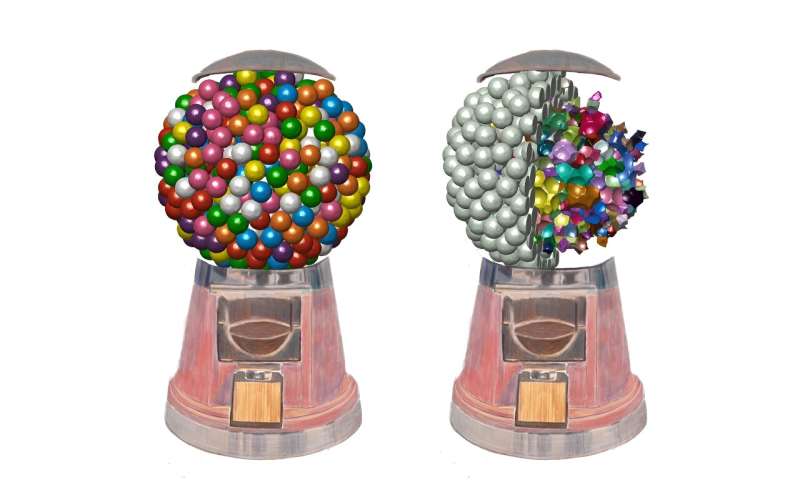This article has been reviewed according to Science X's editorial process and policies. Editors have highlighted the following attributes while ensuring the content's credibility:
fact-checked
peer-reviewed publication
trusted source
proofread
Measuring 3D pores for better wound healing

Biomedical engineers at Duke University have developed a method to identify and characterize the empty spaces between particles in any packed structure. By mapping out these empty spaces, researchers can better understand how cells and other phenomena will respond to their surroundings.
The research was published November 21 in the journal Nature Computational Science.
It's a common party game: jellybeans, candy corn, gumballs or other small objects are packed into a container, people guess how many objects are in the jar, and whoever has the best estimate will win a prize. While there are many methods to count the objects to get the closest guess, Tatiana Segura, a professor of biomedical engineering at Duke University, Lindsay Riley, a postdoctoral fellow in the Segura lab, and Peter Cheng, founder of Ninjabyte Computing, devised a new approach that flipped the game on its head.
"We weren't interested in counting the objects. Instead, we were interested in how many open pockets of empty space there are between the objects," explained Riley. "For many systems, understanding that empty space, or what we call the void space, is actually more important than the objects themselves."
The Segura lab develops hydrogels, called microparticle annealed particle (MAP) gels, composed of microparticles that can be injected into wounds to create a scaffold to promote wound healing. After these particles are packed into the wound or a culture dish, they leave open spaces between particles that cells can grow into. Because cells respond to the microarchitecture of their surroundings, the team wanted a tool that would allow them to better understand the geometry of the void spaces where these cells were growing, be it in a healing wound or a Petri dish.
"To better understand what drives cell behavior in MAP gels, we needed to find a way to accurately separate the interconnected void space of our scaffolds into pockets that we could individually study," said Segura.
Using techniques from mathematical fields like graph theory and computational geometry, the team developed LOVAMAP, short or Local Void Analysis using Medial Axis by Particle configuration. LOVAMAP identifies every distinct open pocket—or 3D pore—between the particles, and their approach focuses on accuracy by using information embedded within the particle configuration itself. These pores include any continuous space where an object can move around, both inside and outside of the scaffold.
"Now that we can accurately identify 3D pores in packed particles, we can begin to understand what drives their shape and connectivity and what 3D pore shapes are responsible for different cell behaviors," said Segura.
"We can do this for any type of packed particles, which allows us to study how different particle shapes lead to different 3D pore structures. For example, we can see that packed rods lead to more elongated 3D pores, packed spheres create the most open spaces, and ellipsoids pack more closely than spheres, which leads to a greater number of 3D pores per volume. LOVAMAP can also tell us how many particles surround each open space!"
Beyond expanding the software to further unravel patterns between particle types and the void space, such as the connectivity between 3D pores, Segura and her laboratory will use LOVAMAP to advance their wound-healing research by comparing how cell behavior is influenced by the different 3D pores mapped by their software. This knowledge, Segura says, will help them optimize their material to promote better wound healing in skin and brain wounds.
While Segura and Riley don't have plans to use LOVAMAP to win any party games, they would still be happy to use the software to study the system.
"If you can tell me average gumball diameter and how tightly packed the gumballs are, I can tell you––with reasonable confidence––how many 3D pores there are in the jar," Riley said. "And I can tell you the average pore size, too."
More information: Lindsay Riley et al, Identification and analysis of 3D pores in packed particulate materials, Nature Computational Science (2023). DOI: 10.1038/s43588-023-00551-x
Journal information: Nature Computational Science
Provided by Duke University



















